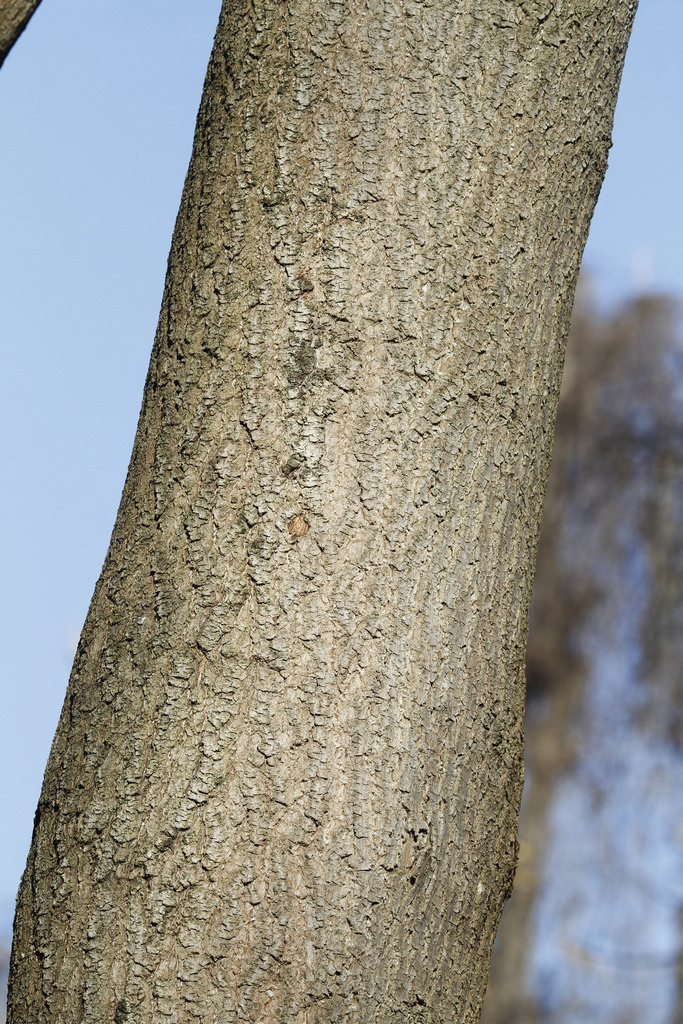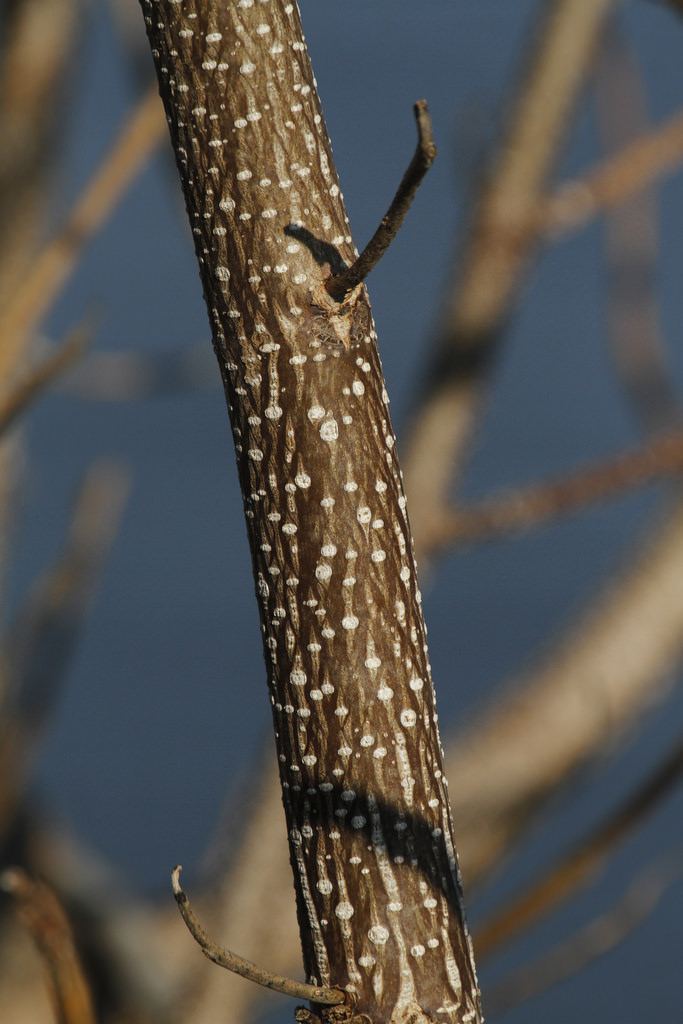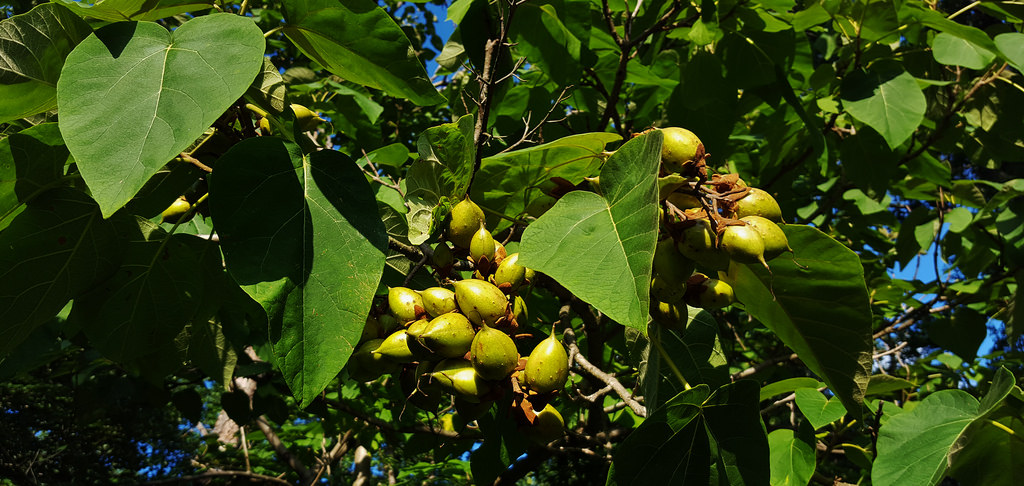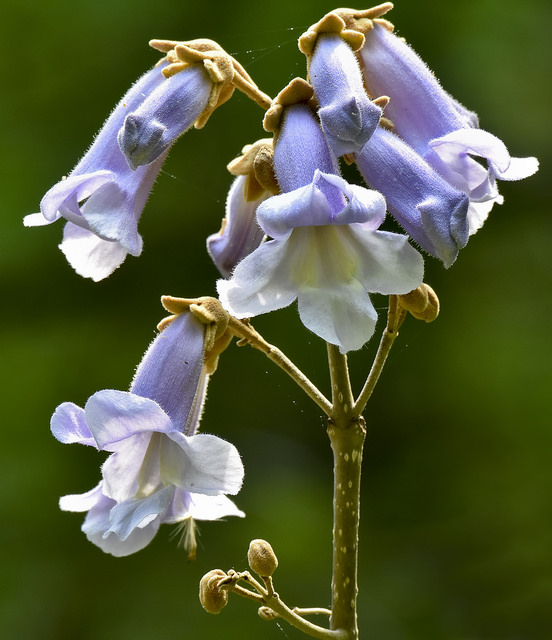Princess Tree
Paulownia tomentosa (Thunb.) Siebold & Zucc. ex Steud.
Description
Princess tree is a member of its own family (Paulowniaceae) and is also called empress tree or royal paulownia. This deciduopus tree grows up to 100 feet tall³ and has a life span of 70 to 125 years³. Immature branches have large, conspicuous, white lenticels. Trunks are gray with unriged bark and may grow to six feet in diameter³. Twigs are up to one-half inch in diameter with a hollow, white pith. The heart-shaped leaves are large up to one foot long and eight inches wide with smooth margins and soft hairs on upper and lower surfaces³. The flowers, opening around Mother’s Day in Maryland, are large, a light lavender, and fragrant. The fruit is a capsule with thousands of small, winged, wind-blown seeds².

Trunk of princess tree. @ B. Hubick*, 2015, Maryland Plant Atlas¹.

Branch with large lenticels. @B. Hubick*, 2015. Maryland Plant Atlas¹.

Leaves and fruits of princess tree. @ M. Beziat*, 2017. Maryland Plant Atlas¹.

Flowers of princess tree. @ W. Crowe*, 2015. Maryland Plant Atlas¹.
Distribution
Princess tree is an introduced tree native to central and eastern China³. It has naturalized throughout the southeastern USA and can be found on every continent except Antartica³. It is widespread throughout Maryland¹. It favors habitats for establishment that are recently disturbed but may be dispersed up to two miles from a parent tree³.
Distribution of princess tree in United States. EDDMapS 5 .
Wildlife Importance
Princess tree has moderate to sever invasive potential in southeastern states³. It is listed as a Maryland invasive species 5 .
Economic Importance
Princess tree is highly valued in Asia where it is used for non-structural house construction, musical instruments, clogs, bowls, hand-carvings and paper³. The wood’s high value promoted development of princes tree plantations for export to Japan³.
Threats
There are no serious pests or diseases to princess tree. It is intolerant of extreme cold temperatures and may be killed at temperatures below zero degrees F 3,4 .
Interesting Facts
- Princess tree seeds require light to initiate germination³.
- Princess trees can grow up to seven feet in one year³.
- The genus and common names come from Princess Anna Paulowna (1795-1865), daughter of Czar Paul I of Russia 4 .
- Princess tree was first introduced to the United States in 1840 5 .
References
- Maryland Plant Atlas: Paulownia tomentosa
- North Carolina State Extension: Paulownia tomentosa
- USDA, Forest Service Fire Effects Information System: Paulownia tomentosa
- Missouri Botanical Garden: Paulownia tomentosa
- Center for Invasive Species and Ecosystem Health: Princesstree
* Imaged used with permission of photographer.
Contributed by J. Hull
